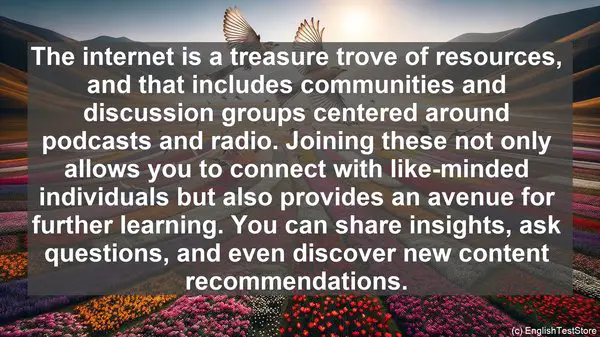Introduction: The Importance of English Listening Skills
As an English teacher, I often come across students who excel in reading and writing but struggle with listening. However, in today’s globalized world, effective English listening skills are more crucial than ever. They not only enhance our communication abilities but also open doors to various opportunities. In this video, I’ll be sharing 10 valuable tips specifically for students at the B2 level, who often find themselves in multilingual contexts. So, let’s dive in!
1. Active Listening: It’s More Than Just Hearing
When we listen actively, we’re not just passively hearing the words. We’re actively engaging with the speaker’s message, trying to understand the context, and making connections. To practice active listening, try summarizing what you’ve heard, asking questions, or even visualizing the information. This way, you’re not only improving your comprehension but also training your brain to process information more effectively.

2. Diverse Content: The Key to Expanding Vocabulary and Cultural Awareness
Listening to the same type of content can become monotonous and limit your exposure to different vocabulary and accents. By diversifying your content, such as podcasts, TED Talks, or even TV shows, you not only make learning enjoyable but also expose yourself to a range of accents and topics. This helps in developing a more comprehensive understanding of the language and its cultural nuances.
3. Note-Taking: A Simple Yet Effective Technique
Taking notes while listening might seem like an additional task, but it’s a proven technique to improve retention and understanding. While you don’t need to write down every word, jotting down key points, unfamiliar words, or even your own thoughts can help reinforce the information. Plus, these notes can serve as valuable references for future revision.
4. Context Clues: Utilizing Surrounding Information
In real-life situations, we often don’t have the luxury of understanding every word. But by paying attention to the context, non-verbal cues, or even the speaker’s tone, we can often grasp the overall message. So, instead of getting stuck on every unfamiliar word, try to focus on the bigger picture.
5. Group Discussions: Enhancing Listening and Speaking Skills Simultaneously
Engaging in group discussions not only exposes you to different perspectives but also trains you to listen actively and respond effectively. By actively listening to others’ viewpoints, you not only broaden your understanding but also learn to construct more coherent and meaningful responses.

6. Dictation Exercises: A Classic, Yet Effective Practice
Dictation exercises, where you listen to a passage and write it down, might seem old-fashioned, but they’re still highly effective. They not only improve your listening accuracy but also enhance your spelling and overall language proficiency. You can find dictation exercises online or even create your own using audio resources.
7. Speed Variation: Preparing for Real-Life Conversations
In real-life conversations, the speed at which people speak can vary greatly. So, it’s essential to expose yourself to different speech rates. Start with slower audio resources, gradually moving on to more natural, fast-paced ones. This way, you’re preparing yourself for the diverse listening scenarios you might encounter.
8. Pronunciation Focus: Listening for Sounds and Intonation
Listening isn’t just about understanding words; it’s also about deciphering sounds and intonation patterns. By focusing on pronunciation while listening, you not only improve your comprehension but also enhance your own speaking skills. Mimicking the speaker’s intonation or practicing specific sounds can be helpful exercises.
9. Technology Tools: Making the Most of Language Learning Apps
In today’s digital age, we have a plethora of language learning apps and tools at our disposal. Many of these apps offer listening exercises, from short dialogues to news clips. By incorporating these tools into your daily routine, you not only make learning more interactive but also get instant feedback, helping you track your progress.
10. Consistency: The Key to Long-Term Improvement
Lastly, improving your English listening skills, like any other skill, requires consistency. Even dedicating a few minutes every day to listening exercises or activities can make a significant difference in the long run. So, set realistic goals, create a routine, and make listening practice a regular part of your language learning journey.


















